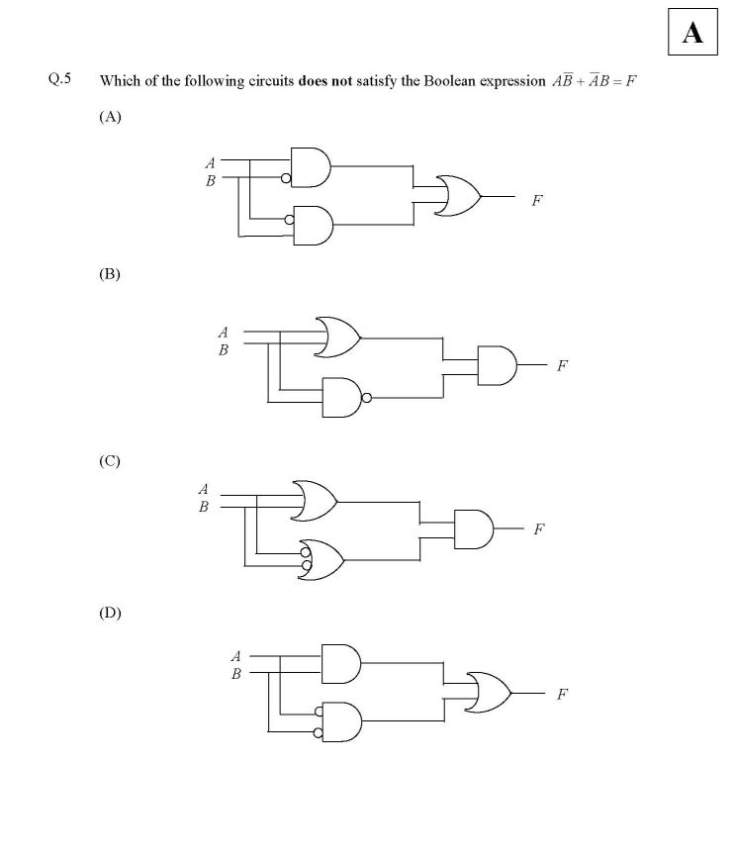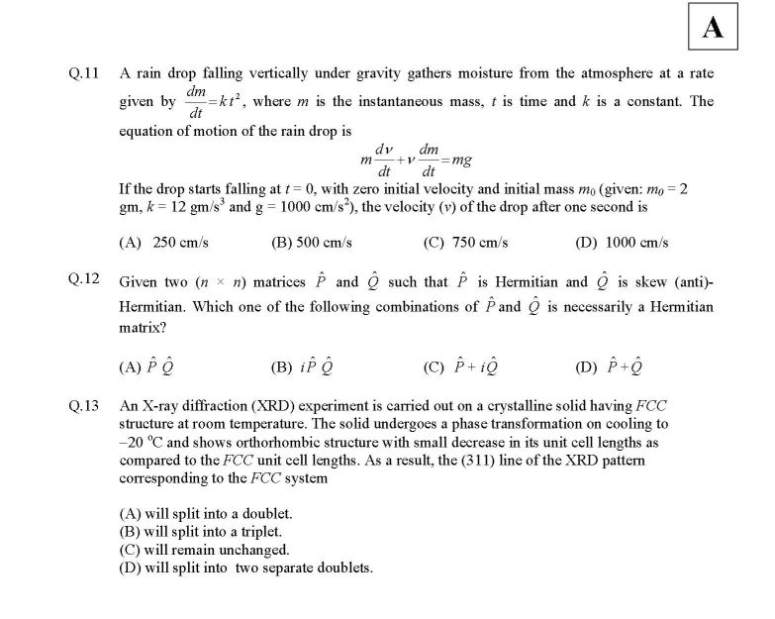|
#2
26th November 2014, 07:53 AM
| |||
| |||
| Re: IIT-JAM Question Paper
As you want I am here providing you the sample question paper of the IIT-JAM. Sample Questions : An X-ray diffraction (XRD) experiment is carried out on a crystalline solid having FCC structure at room temperature. The solid undergoes a phase transformation on cooling to —20 °C and shows orthorhombic structure with small decrease in its unit cell lengths as compared to the FCC unit cell lengths. As a result, the (311) line of the XRD pattern corresponding to the FCC system (A) will split into a doublet. (B) will split into a triplet. (C) will remain unchanged. D) will split into two separate doublets. Light described by the equation E= (90 V/m)[sin(6.28 × 1015 s-1) t + sin(12.56 × 1015 s-1) t] is incident on a metal surface. The work function of the metal is 2.0 eV. Maximum kinetic energy of the photoelectrons will be (A) ) 2.14 eV (B) 4.28 eV (C) 6.28 eV (D) 12.56 eV A gas of molecular mass m is at temperature T. If the gas obeys Maxwell-Boltzmann velocity distribution, the average speed of molecules is given by (A) m T kB (B) m T kB 2 (C) m T kB π 2 (D) m T kB π 8 Consider free expansion of one mole of an ideal gas in an adiabatic container from volume V1 to V2. The entropy change of the gas, calculated by considering a reversible process between the original state (V1 , T ) to the final state (V2 , T ) where T is the temperature of the system, is denoted by ΔS1. The corresponding change in the entropy of the surrounding is ΔS2. Which of the following combinations is correct? (A) ΔS1 = R ln (V1 / V2 ), ΔS2 = − R ln (V1 / V2 ) (B) ΔS1 = − R ln (V1 / V2 ), ΔS2 = R ln (V1 / V2 ) (C) ΔS1 = R ln (V2 / V1 ), ΔS2 = 0 Q.8 (D) ΔS1 = − R ln (V2 / V1 ), ΔS2 = 0 Equipotential surfaces corresponding to a particular charge distribution are given by ( ) i V z y x = + − + 2 2 2 2 4 , where the values of i V are constants. The electric field E r at the origin is Q.9 (A) 0 = E r (B) x E ˆ 2 = r (C) y E ˆ 4 = r (D) y E ˆ 4 − = R The wave function of a quantum mechanical particle is given by ψ(x) = 5 3 ϕ1(x) + 5 4 ϕ2(x) , where ϕ1(x) and ϕ2(x) are eigenfunctions with corresponding energy eigenvalues − 1 eV and −2 eV, respectively. The energy of the particle in the state ψ is (A) 25 41 − eV (B) 5 11 − eV (C) 25 36 − eV (D) 5 7 − eV      Here is the attachment . |